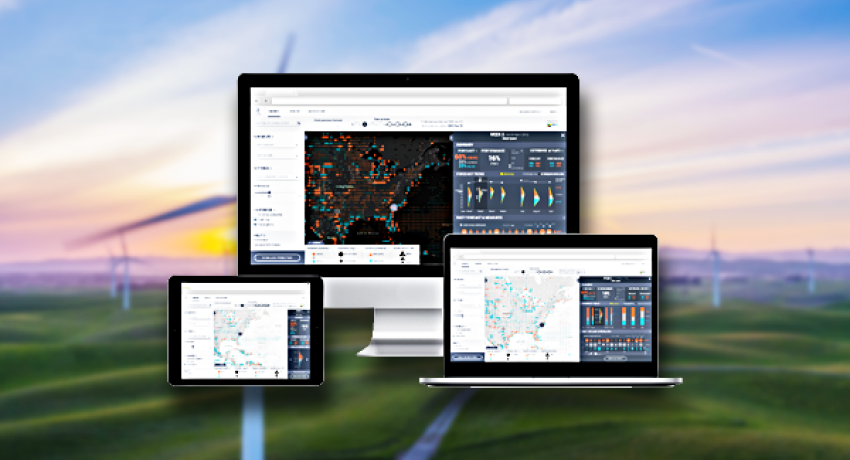The DST tool has been specifically developed for the energy sector
EU-funded project S2S4E has launched on 20 June its new sub-seasonal and seasonal forecasts which can enable better preparation for extreme weather events in a changing climate and could be useful for emergency planners and all weather-dependent industries. The new forecast is available online and goes under the name S2S4E Decision Support Tool (DST). It shows the global climate outlook, with prognosis for precipitation, solar radiation, temperature and wind ranging from one week to three months ahead.
Many people often think about climate change as something that will happen in 20-30 years, but it is happening now, with new heat and precipitation records being hit all the time. Current methodologies that look into the past do not account for this climate variability, but our sub-seasonal and seasonal forecasts do,” says project coordinator Albert Soret from the Barcelona Supercomputing Center (BSC).
Climate change means we will see more and more extreme weather events unlike anything we’ve ever experienced before, and we need tools that will help us adapt to these changes,” says Soret.
Developed by energy experts for energy experts
DST has been specifically developed for the energy sector, and it thus also shows forecasts for electricity demand, and wind, solar and hydropower production, as well as inflows from rivers to hydropower plants.
It has been developed by climate scientists in cooperation with energy companies, taking as a basis the operational global prognosis from the European Centre for Medium-Range Weather Forecasts, as well as forecasts from the National Centers for Environmental Prediction. Statistical methods have then been used to calibrate and improve these outlooks.
"DST is the first real attempt at putting state-of-the-art knowledge from climate research into an operational service tailored for the energy market,” says Soret.
We have applied novel research methods to explore the frontiers of weather conditions for the forthcoming weeks and months,” he adds.
Energy companies ENBW, EDPR, and EDF are among the partners in the project.
They have contributed to the development of the DST by providing knowledge about what kind of information energy traders and other players in the energy market really need, and by customising the interface so that it shows the forecasts in a way that is useful for them.
Will help decision-making
"Energy trading and risk management are all about decision-making. With a strong growth in renewable energy, the share of weather-related influences on the power market is increasing. State-of-the-art weather forecasting is already key for success in the energy business, and its importance will definitely continue to increase in the future,” says Christoph Elsässer, energy meteorology analyst at ENBW.
Mathieu Salel, innovation strategist at French consultancy LGI – also a partner in the project – agrees, saying that the benefits of the tool for the energy business is “crystal clear”.
In a climate-dependent sector, the more climate information you have, the less risk you taken when making decisions,” Salel says.
The DST will also be good for the climate because it will improve the integration of renewable energy in the power supply by making forecasts for solar, wind and hydropower production more reliable, meaning that the dependence on fossil fuels can be reduced,” he adds.
The DST (beta version) is available at www.s2s4e.eu/dst and will be free to use at least until the end of November 2020.
Also useful for people working in other industries
Despite having been developed for the energy industry, the DST’s forecasts can also be of interest to people working in other sectors.
We have been engaging with many energy users to develop this tool, but farmers, emergency planners and weather and climate analysts in insurance companies could also benefit from it,” says Isadora Jiménez, knowledge transfer expert at the Barcelona Supercomputing Center, and part of the coordination team of the project.
The wine sector is a clear example. Knowing well in advance if a season is going to be particularly dry or wet can make a difference for wine producers when they decide how to trim their grape vines in order to protect them from the rain or the sun, and when making decisions on how much fertilisers to use,” she adds.
In general, the earlier people know how the weather will be, the better they will be able to plan and prepare for it,” Jiménez says.
Will analyse previous forecasts
In addition to being available online and continuously updated, written forecast outlooks will also be published every month, explaining the forecasts for the weeks and months ahead. These outlooks will also contain an analysis of how good the previous month’s forecasts were.
In order to ensure the quality of the DST’s forecasts, the impacts of the tool will be analysed every week. This way we will, by the end of 2020, be able to say something about how much money energy traders could save from using this tool,” Jiménez explains.
Over the next 18 months we will also organise monthly webinars to explain the forecasts and answer questions people may have about the tool and its outlooks,” she adds.
Testers needed
Energy companies are welcome to test the tool together with us, and by giving us feedback about the tool, they will in return get expect advice from the people who are creating the DST’s forecasts,” says Jiménez.
If you are working for an energy company and are interested in testing the DST, please send an e-mail to s2s4e@bsc.es.
Facts about S2S4E
S2S4E (Sub-Seasonal to Seasonal Climate Forecasting for Energy) is a project funded by the EU’s research and innovation programme Horizon 2020 that is working to make long-term forecasts for renewable power generation more reliable and usable.
It is coordinated by the Barcelona Supercomputing Center and the 12 partners in the project come from seven different countries in Europe (Spain, France, Norway, Germany, Italy, United Kingdom and Sweden).
Further information on the following videos:
https://www.youtube.com/watch?v=K0AQENTydpk#action=share
https://www.youtube.com/watch?v=Bm8u-8MD-fs&feature=youtu.be
Written by Iselin Rønningsbakk / CICERO and Isadora Jimenez / BSC.


